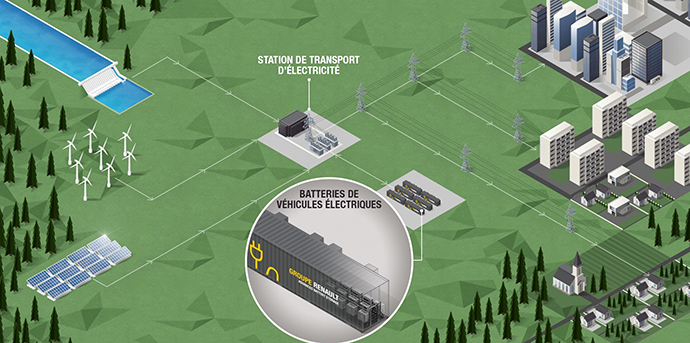Sixteen years ago, when I was first starting out as Site Selection’s managing editor, I participated in a conference workshop where breakout groups discussed challenges brought on by the rosy-eyed prospect of a greener, more sustainable world, and the business ideas that might pop up to address them.
With the over-eagerness of a guy starting a new job, I observed that battery-making was a dirty business. “What are people going to do with all of these batteries running these electric vehicles?” I asked. “The opportunity would be to find a way to recycle them, or make them in a sustainable way from the get-go.”
The atmosphere at this Las Vegas event was, to be sure, not conducive to actual exploration of ideas. I got mostly blank stares, as people checked to see where the next open bar reception was, and even the moderators were more bent on expediting than experiencing.
Today, more than one corporation is grappling with this issue for real. And one carmaker — France’s Groupe Renault — announced in September a new program to address it.
The company’s “Advanced Battery Storage” program aims to build by 2020 the biggest energy stationary storage system using EV batteries ever designed in Europe by 2020.
The system, installed across several sites in France and Germany, will facilitate the integration of renewable energies into electric grids. It will have a storage capacity of at least 60 MWh, with the first facilities to be developed in early 2019 on three sites in France and Germany: at the Renault plants in Douai and Cléon, and at a former coal-fired power plant in North Rhine-Westphalia.
“The storage capacity will then be gradually expanded over time to contain the energy of 2,000 EV batteries,” said the company. “At this phase, the system will have reached — or more likely, exceed — the 60 MWh, equivalent to the daily consumption of a city of 5,000 households.”
The system will serve as a buffer between power consumption and production, and help increase the proportion of renewable sources in the energy mix. The slightest gap between consumption and production sets off disturbances that can compromise the stability of the local frequency (50 Hz), said the company.
“Our stationary storage solution aims to offset these differences — it delivers its reserves to a point of imbalance in the grid at a given time to reduce the effects,” said Nicolas Schottey, director of the Groupe Renault New Business Energy program. By helping to maintain the balance of the grid, the stationary storage system will boost the economic attractiveness of low-carbon energies.
The system will use EV batteries stacked in containers —second-life batteries as well as new batteries stored for future use in standard replacement during after-sales operations. “This unique assembly will give Advanced Battery Storage the capacity to generate or absorb, instantaneously, the 70MW power,” Schottey said.
As part of the “Advanced Battery Storage” program, Groupe Renault has joined up with several players including La Banque des Territoires, the Mitsui Group, Demeter (via le Fonds de Modernisation Ecologique des Transports), and The Mobility House. Find out more about the company’s vision and documentation of an electric mobility ecosystem at its EasyElectricLife website.

